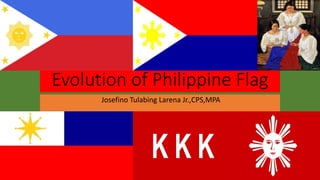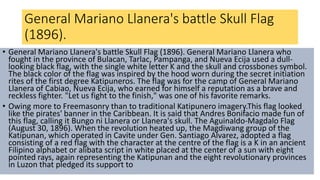- The Philippine flag has evolved over time from various revolutionary flags used during the Katipunan revolution in the late 19th century to the current national flag.
- The current flag was approved in 1998 and features a blue field with a white equilateral triangle, representing equality, containing a yellow sun with eight primary rays and three yellow five-pointed stars, one in each triangle corner.
- The colors and symbols represent key aspects of Philippine history and aspirations for independence - the blue for unity, the sun for progress, and the stars and rays for the first provinces that revolted against Spanish colonial rule.




































